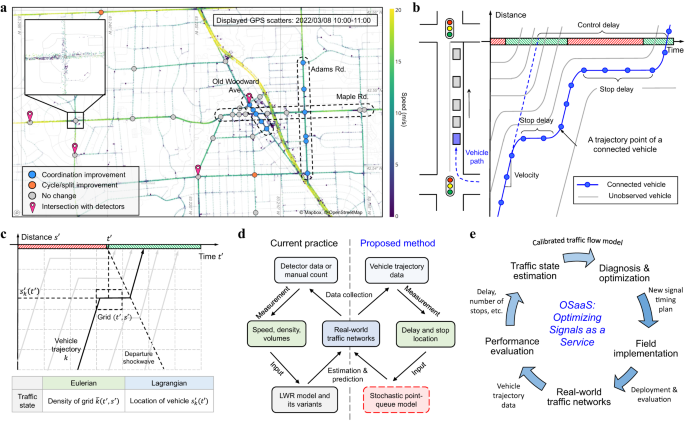2024-02-20 ミシガン大学
<関連情報>
- https://news.umich.edu/improving-traffic-signal-timing-with-a-handful-of-connected-vehicles/
- https://www.nature.com/articles/s41467-024-45427-4
普及率の低い車両軌跡データによる信号機の最適化 Traffic light optimization with low penetration rate vehicle trajectory data
Xingmin Wang,Zachary Jerome,Zihao Wang,Chenhao Zhang,Shengyin Shen,Vivek Vijaya Kumar,Fan Bai,Paul Krajewski,Danielle Deneau,Ahmad Jawad,Rachel Jones,Gary Piotrowicz & Henry X. Liu
Nature Communications Published:20 February 2024
DOI:https://doi.org/10.1038/s41467-024-45427-4

Abstract
Traffic light optimization is known to be a cost-effective method for reducing congestion and energy consumption in urban areas without changing physical road infrastructure. However, due to the high installation and maintenance costs of vehicle detectors, most intersections are controlled by fixed-time traffic signals that are not regularly optimized. To alleviate traffic congestion at intersections, we present a large-scale traffic signal re-timing system that uses a small percentage of vehicle trajectories as the only input without reliance on any detectors. We develop the probabilistic time-space diagram, which establishes the connection between a stochastic point-queue model and vehicle trajectories under the proposed Newellian coordinates. This model enables us to reconstruct the recurrent spatial-temporal traffic state by aggregating sufficient historical data. Optimization algorithms are then developed to update traffic signal parameters for intersections with optimality gaps. A real-world citywide test of the system was conducted in Birmingham, Michigan, and demonstrated that it decreased the delay and number of stops at signalized intersections by up to 20% and 30%, respectively. This system provides a scalable, sustainable, and efficient solution to traffic light optimization and can potentially be applied to every fixed-time signalized intersection in the world.



